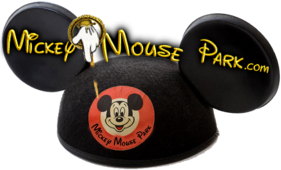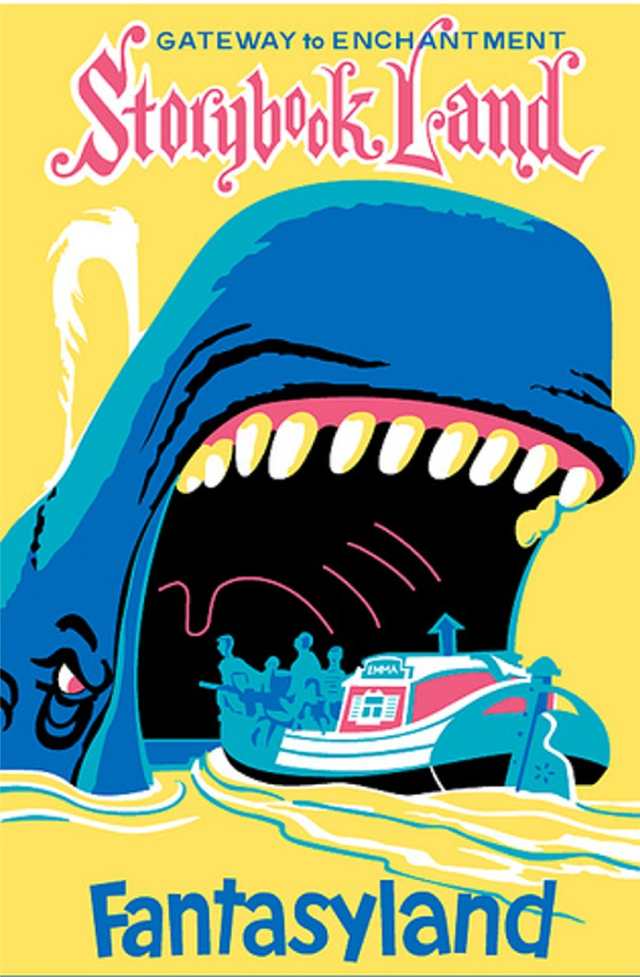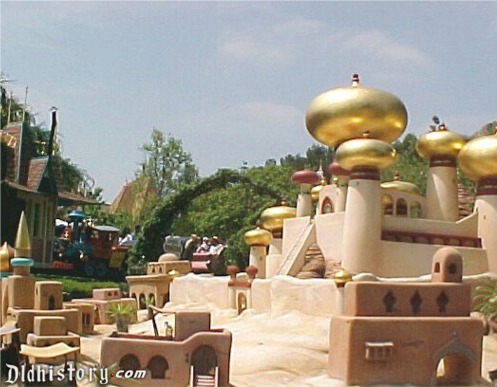
A patchwork quilt made of plants lined one hill and adorable villages and palaces taken from the classic Disney animation dotted the once barren banks In Disneyland's second summer Walt Disney finally got the charming boat ride he wanted all along limited on time and money early 1955 he had to settle for the feeble Canal Boats of the World attraction that sputtered noisily across one undeveloped acre at the back of Fantasyland. However, even as that attraction was operating plans were already underway for a huge remodel the began in the fall of 1955 and lasted into the following spring official dedication ceremonies were held on June 18th, 1956 with some of the TV's Mouseketeers on hand to help celebrate.
When the 7-minute attraction started up again it did so with little knolls in place of the muddy slopes that had formerly rimmed the canals many of the carefully manicured miniature trees and flowers were planted in their original containers to stunt their growth.Among the meticulously detailed displays on view, were windmills and houses from The Old Mill and Three Little Pigs cartoons gardens inspired by Peter Pan Geppetto Village and toy shop from Pinocchio the Cinderella Castle and coach and structures from The Adventures of Ichabod and Mr. Toad and Alice in Wonderland built mainly from wood and fiberglass. All the buildings were built on a 1/12 scale meaning 6-foot doorways became 6 inch doorways. So well-crafted were the miniatures that the metal hinges on the tiny doors actually worked.
A 1994 update added scenes for more recent Disney movies including Aladdin and the Little Mermaid all built with the same careful skill and gentle spirit to keep this a lovely attraction. Among the subtle details guests like to watch for are the blinking eye on Monstro the whale and the steam he periodically emits from his blowhole. Veteran guests recognize the lighthouse out front is the old ticket booth used in the days when guests had to pay their way for each individual attraction. As they did in the 50s guests today observe the scenes while sitting and low-slung bateau similar to those on northern European canals and rivers.
Costume cast members drive the quiet boats along a track submerged in 46,500 gallons of water. These Canal captain's deliver a live narration. The current names for the boats are Alice, Ariel, Aurora, Belle, Cinderella, Daisy, Faline, Fauna, Flora, Flower, Katrina,Merryweather, Snow White, Tinkerbell and Wendy.The Original names for the 8 boats were: Nellie Bly, Lady Katrina, Lady Of Shallot, Annie Oakley, Gretel, Bold Lockinvar,Lady Of The Lake and Lady Guinevere. Because its entrance is located along the parks' parade route, the attraction closes approximately sixty minutes before any parades
At one time, it was thought Big Rock Candy Mountain would be built here, and the boats would enter the mountain and come upon Dorothy having a party with her friends from Oz.Originally, the boats were powered by outboard motors, which often overheated and had to be towed back to the dock. Worse, the gasoline engines were so loud that the passengers could barely hear the spiel. After a few months, the motors gave way to batteries stashed under the seats. That first summer, the ride was staffed predominately by men, dressed in white shirts and wide brim hats. Required a "B" ticket in 1955 Required a "D" ticket in 1956 Required a "C" ticket in 1957 Required a "D" ticket in 1959 after that
Here is a video I shot myself in 1977 using an super 8 millimeter camera unfortunately this camera had no sound capability but it does give you an idea what the attraction looked like the ྂs
From WED Disneyland Dictionary 1968 Storybook Land Canal Boats Is a kingdom within a kingdom. Viewed from Dutch canal boats (or Casey Jr. Circus Train), it features miniature (Scale: one inch to one foot) settings from Disney animated motion pictures, accomplished in the most detailed and painstaking manner. Visitors see "Geppetto's Village," nestled below the Swiss Alps, where even a church bell chimes; "Cinderella's Dream Castle"; Mr. Toad's proud "mansion," and many other settings from the pages of your favorite story books.
From Steve Birnbaum brings you the best of Disneyland 1982: This cruise past miniature scenes from well-known children's stories is not one of Disneyland's major attractions, yet few who take the trip deny that the journey is one of the loveliest on the property.
Specs: Capacity 1950 per hour -- Capacity per boat 14 -- Cycle Time 8:03 -- Load Time: :36 -- Unload Time :23 -- Trip Time 7:00 -- Dispatch Interval :48 -- Trips per hour 75 -- Distance Traveled 998 feet -- Speed 1.6 MPH

 Click Here To Gain Access
Click Here To Gain Access
 Click Here To Gain Access
Click Here To Gain Access
 Click Here To Gain Access
Click Here To Gain Access
 Click Here To Gain Access
Click Here To Gain Access




























